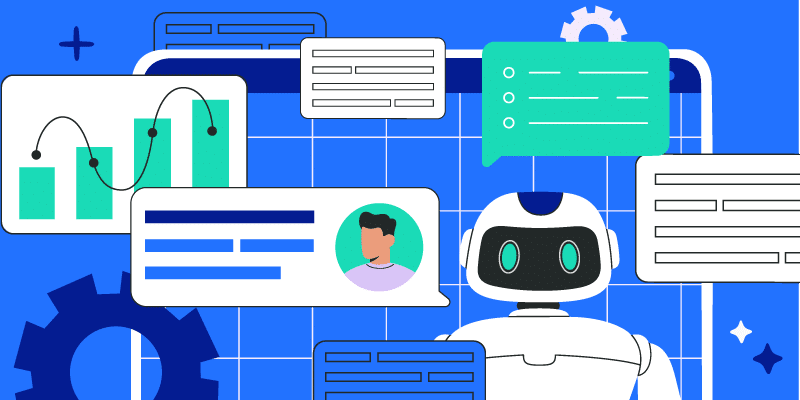How SaaS management platforms save time and money
January 17, 2025
5 minute read

Editors’ Note: This is an update on an earlier post.
Tired of SaaS chaos? You’re not alone. Navigating the sheer volume of SaaS applications can feel like an impossible feat.
But what if there was a secret weapon for IT to tame this chaotic landscape? Enter: SaaS Management Platforms (SMPs).
These powerful tools can help establish complete visibility into your tech stack (and secure it), automate many of the most tedious tasks, like license tracking and cost analysis, freeing you up to focus on more strategic initiatives.
Here we discuss how SaaS management platforms can liberate you from the constraints of time, money, and sanity.
App consolidation is the new reality
Consolidation is nothing new for IT leaders as IT budgets always expand and contract with changing economies.
ZDNet reported a majority of companies plan to increase their IT budgets for 2025 with only 4% planning to decrease.
Despite increasing budgets, organizations continue to pressure IT to cut costs. With software a major line item, it’s no surprise many are turning to consolidating their tech stacks.
The logical way to consolidate? Evaluate your tech stack based on the value they provide – maximize the resources you have
To confront this challenge, SMPs are here to help. By taking complete advantage of a fully featured SMP, your IT department will be readily equipped to discover, manage, and secure your SaaS environment, while optimizing SaaS spending and driving new IT efficiencies.
First up, let’s explain how SMPs help IT departments stretch the budget.
How SaaS management platforms save on SaaS spend
So even if you think you have a strong grasp of which applications your employees use, you probably don’t have enough clarity to make smart SaaS spending decisions. But by using an SMP with a robust discovery capability that continually scans your environment, you do. At a glance, your IT team has full visibility at all times of both sanctioned and unsanctioned apps.
4 ways SaaS management platforms prevent needless SaaS expenses
Even in a world of nearly unlimited abundance, no organization should tolerate needless spending. All organizations should use SaaS management software for full visibility to eliminate the following:
- Shadow IT, lack of control.
By identifying and managing every SaaS application, companies gain a clear picture of what software is actually being used, including those deployed without IT approval or knowledge. This not only minimizes the security risks inherent in Shadow IT, but also reduces compliance risks and safeguards data integrity. - Identical SaaS app used in different accounts by different users and teams.
When multiple teams sign up for the same app on their own, you miss out on enterprise volume pricing discounts, which is a really easy way to cut costs. Additionally, you’re probably missing out on preferred features, functionality, and support that comes with higher volume SaaS tiers. With new visibility from an SMP, you’ll be able to consolidate multiple accounts for better deals and avoid overlapping applications in the future. - Different SaaS applications that solve the same use case.
In addition to all the above benefits that you’re missing out on, you also lose out on efficiencies related to SaaS app standardization, like user and IT productivity. An SMP gives you usage insights to standardize on the most used SaaS apps, which in turn, aid IT productivity. - Unused and underutilized SaaS applications.
If you’re like the usual organization, 15% of your apps have not been used in 30 days, and 10% have not been touched within the last 90 days. Full visibility around employee SaaS adoption and deep insights allows you to stop paying for apps with no or little employee use. And furthermore, by taking advantage of alerts and automation, you can build a workflow that makes sure no IT team time gets wasted, either.
SMPs keep contracts in one place
Software vendor contracts scattered across multiple folders, users, and platforms hinder IT and finance departments during renewal time.
SaaS management platforms consolidate all your software contracts into a central repository and send automated notifications for impending renewals (30, 60, or 90 days in advance). This empowers you and your whole team to consolidate, change, or negotiate effectively well in advance.
SMPs help IT collaborate with end users
Unfortunately IT professionals aren’t mind readers so working with end users is necessary to determine if an application is actually useful to them.
“
Partnering with your end users is not a want, but a need,” Nick Zimmerman, Senior Manager at Bullhorn said. “Asking things like, ‘Is this something you absolutely need?’ and ‘Is there an alternative tool already in our tech stack?’ help build a tech stack that works for you rather than against you.”
With an SMP, IT can skip the hassle of talking to every single user. Instead, IT can send out quick surveys to get a feel for what apps people love and hate. The results are then shown in a sentiment grid, making it pinpoint which apps are a hit and which need a closer look.
How SaaS management platforms save time and grow IT efficiency
How SaaS management platforms save time is split into two categories:
- Streamlining daily repetitive tasks, and
- Automating the user lifecycle
To fully comprehend the efficiencies that come with the centralization of SaaS operations, you need to step back. Think about day-to-day-management within each native SaaS console.
There’s a learning curve to master IT tasks within one native admin console, and it’s time-intensive to stay current with it as it develops and changes over time. Now multiply that challenge by 20, 40, or however many apps you have in your environment. In addition, consider how time-consuming it is to hop in and out of each console individually to perform the necessary admin tasks.
It can be slow, error-prone drudgery, indeed.
With a SaaS management platform, IT trades the native admin console juggling act for managing in a single, centralized tool
User, app, and file data are centralized, along with hundreds of administrator actions IT needs. This includes routine updates, bulk changes, and expedited security remediation. By trading the juggling routine for a single pane of glass, IT teams accomplish tasks in dramatically less time and with fewer errors.
Automating user lifecycle management using an SMP delivers the biggest IT efficiencies
This includes onboarding, offboarding, and the mid-lifecycle changes in between.
Automated onboarding creates Day One readiness and an impressive new employee experience. By setting up custom automated workflows, IT teams smoothly transition new employees from offer acceptance to the first days on the job. A few simple actions by human resources or IT activates workflows to provision a new user’s apps, assign permissions, share files and folders, add them to groups and projects, and more.
Simplified mid-lifecycle change automation boosts efficiency. Employees change roles or take extended leaves. IT can use workflows to make it fast and easy to change privileges and re-assign resources. Automated alerts communicate that transfer is complete and audit logs prove it’s done—both saving IT time.
Automated offboarding saves time and headaches. Offboarding is an involved series of steps that must be completed within a short period of time. So the best SaaS management platforms run workflows to automatically remove application and group access, transfer files, log all actions for reporting and compliance, as well as retain and then delete files according to security policy. It all adds up to significant time savings and new IT efficiency.
All in all, a SaaS management platform saves IT time and grows IT efficiency. Because of centralized administration, common tasks are easily automated to eliminate boring, manual repetitive work. Teams truly get more done with less—and focus on what’s most important.
Choosing the right SaaS management platform pays dividends
Of course, knowing what to automate and which tool to use is half of the battle. If you’re not sure how to begin, start by looking at how the lack of data-driven insight and visibility wastes SaaS licensing costs.
Next look at your IT processes and inventory your pain points. Where are you slow? Where do IT team members make the same mistakes? Which day-to-day tasks bog them down? Which process, if automated, would make the biggest impact on IT efficiency? Which automated processes still need greater improvement? Where could a larger range of workflow actions and pre-built integrations deliver even higher efficiencies?
As for which tool to use, SaaS management platforms are designed to deliver many benefits. They should save you from needless spending on licensing fees and wasted time spent on inefficient processes. If your current tools aren’t doing that, then it’s time for a better SaaS management platform.
But if your IT team isn’t using any SaaS management platform, you should be. Automating IT smoothes operations, saves precious labor time, and frees up IT hours to work on strategic, revenue-boosting initiatives.
To see how BetterCloud can help discover, manage, and secure your SaaS environment, request a demo.






